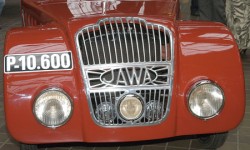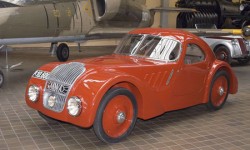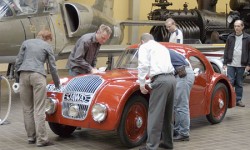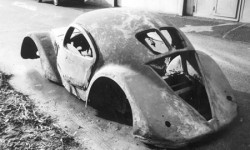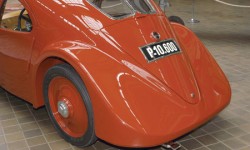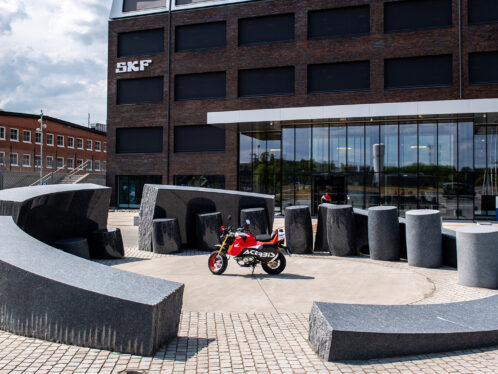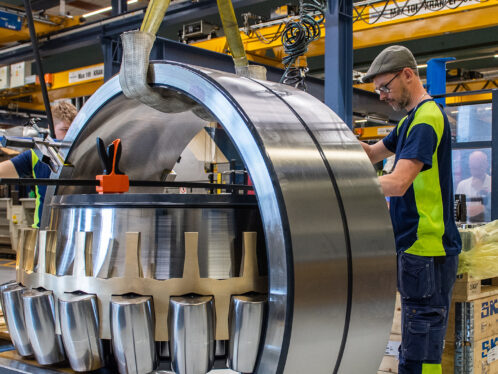
Winning the race
It’s been a long, hard race for the Jawa 750. The fiery red car, the last of its kind, has been fully restored and now sits proudly in the National Technical Museum in Prague, Czech Republic.
It’s been a long, hard race for the Jawa 750. The fiery red car, the last of its kind, has been fully restored and now sits proudly in the National Technical Museum in Prague, Czech Republic.
It took 70 years for the machine to reach its new home. The car was created to participate in the Czechoslovak 1,000 miles race, an annual non-stop, open-road endurance contest that was held briefly in the 1930s. Such a race demanded light, fast cars that could reliably burn through long hauls at high speeds. Fortunately, the Czechoslovakians boasted an auto industry that was one of the most innovative in the world. Engineers at Prague’s Jawa car factory thought up a compact two-seater with a unique and innovative construction: The car was supported by only a wooden frame. This light structure allowed the two-stroke, 750-cubic-centimetre engine to give the car a good boost down the road.
Jawa built six 750s, all of which were entered in the 1935 race. Although none took the event’s top prize, they finished in the first three positions in the 750 cc category. The winning roadster boasted an average speed of 83.7 kilometres per hour during the race, impressive even by today’s standards.
Unfortunately for the 750s, the 1935 version of the Czechoslovak 1,000 miles race was the final one. The cars were returned to Jawa and later ended up in private hands. Over the years nearly all of them disappeared, but in 1976, a badly dilapidated one found its way into the possession of Jan Egidy, who subsequently gave what was left of the car to the National Technical Museum in 1992.
The terrible state of the machine necessitated a massive overhaul, an effort that consumed much time and capital. The museum found a private partner in SKF Loziska a.s., and in 2001 the long and painstaking restoration project began.
The car was finally unveiled at a ceremony in the museum’s cavernous Transport Hall on June 15, 2005 – the 70th anniversary of the race it participated in. It makes for a striking exhibit: a compact, lethal and stylish racer with an aero-dynamic bubble of a hood, sculpted wheel wells and a solid, old-fashioned front grille.
Dating from a time when custom automobiles were objects of beauty, the Jawa 750 is a valuable piece of mechanical art. This, combined with its heritage as a swift little racing machine, means that Jawa’s creation is still very much a winner.


